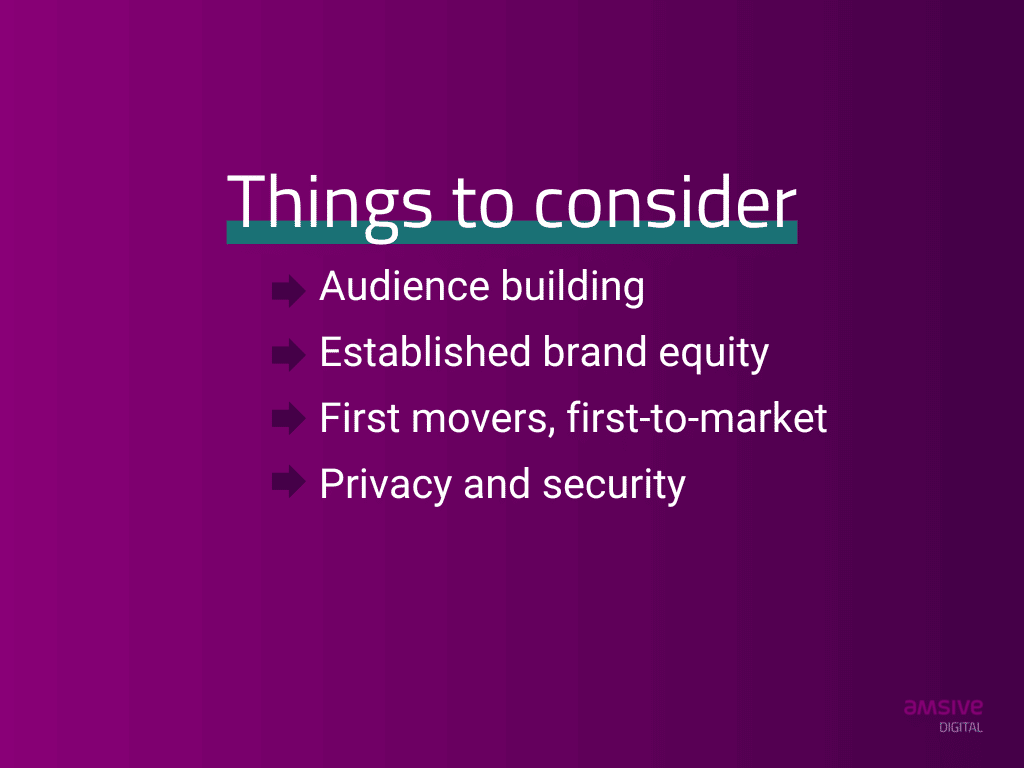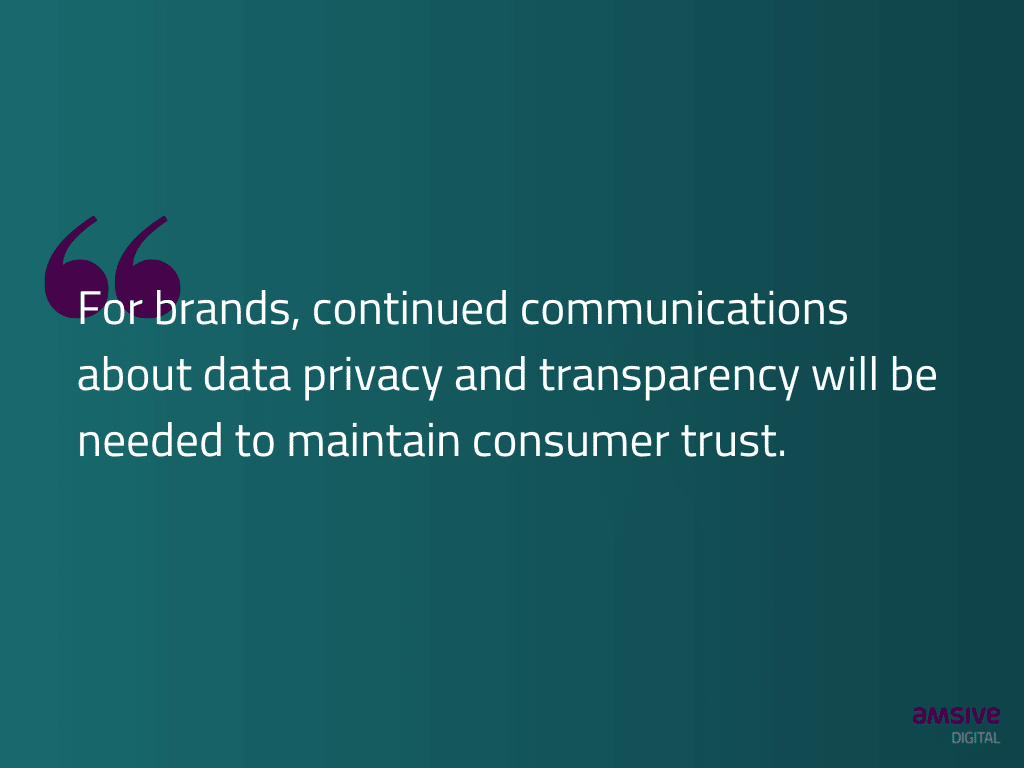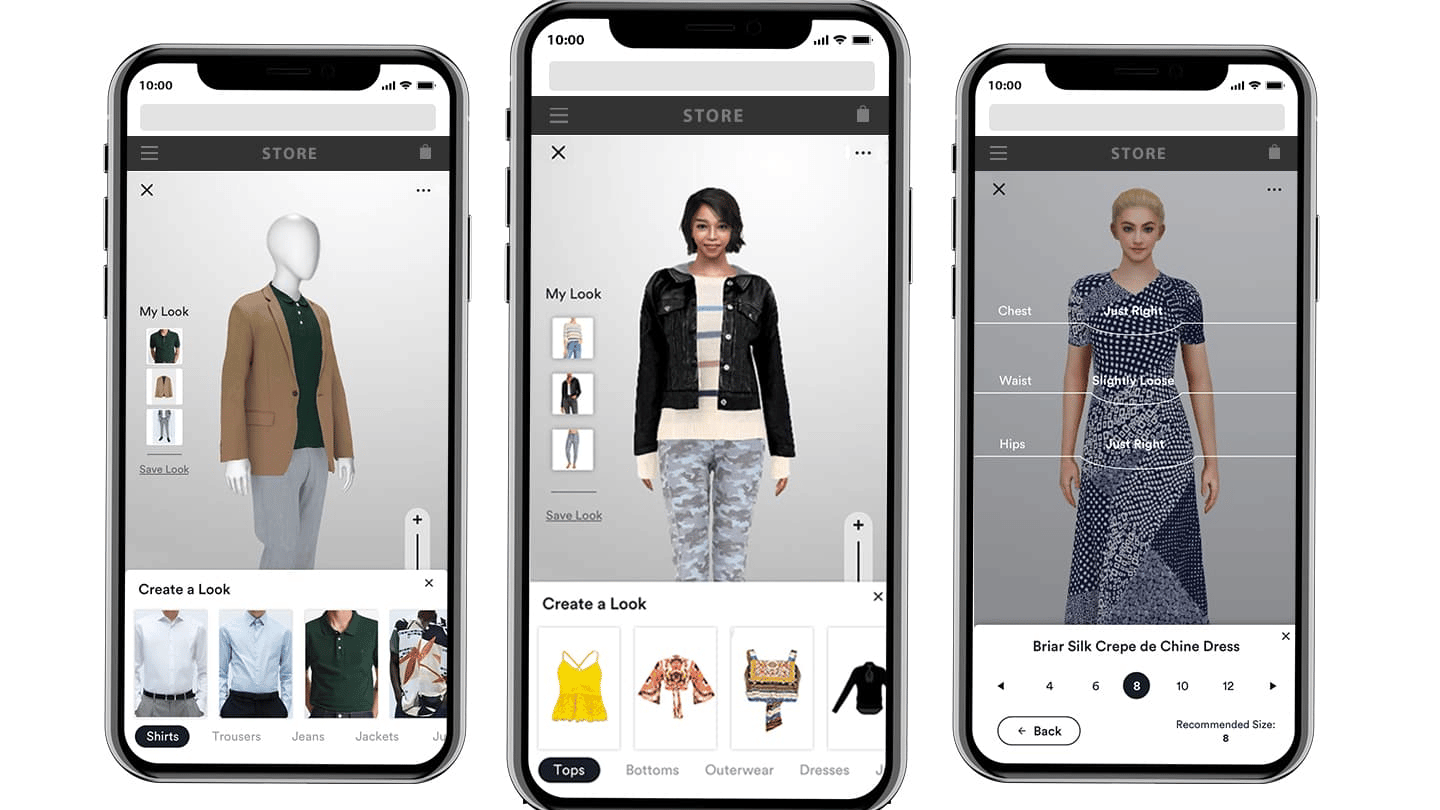The metaverse marketing checklist │How to begin marketing in the metaverse │Opportunities and measurement
Metaverse marketing has been one of the well-worn terms of 2022. It’s easy to get swept up in the metaverse hype cycle, and brands certainly don’t want to be left behind. However, no two brands and businesses are the same. What makes sense for enterprise-level first adopters doesn’t carry over to all businesses. Understanding the current opportunities and considerations allows brands to make informed decisions that can extend their digital strategy in the most impactful way for their bottom lines.
From expanding brand awareness for younger audiences to building a better-connected customer experience that alleviates reluctance to purchase, the metaverse and its technologies are tools for marketers.
While several industries, such as fashion, home goods, and furnishings, seem like a no-brainer for metaverse advertising, businesses outside of these shouldn’t discount this opportunity.
Instead, every business should think critically about how to deepen its digital strategy and improve its customer experience. For some brands, this means marketing within the metaverse.
The Metaverse Marketing Checklist
The metaverse is uncharted territory. As with every new technology, navigating when to press ‘go’ and when to ‘wait and see’ is a pivotal decision. Several key components should be top-of-mind for brands ready to make a play with extended realities and AR/VR technologies, including:
- Audience building
- Established brand equity
- First movers, first-to-market
- Privacy and security

1. Audience Building
Gen Zers are today’s primary customers for virtual reality apps and platforms. Introduced through gaming or social media, virtual world-building and digital connection is part of their everyday lives. If your goal is to reach Gen Z (and in time Gen Alpha), advertising in-world in virtual spaces can be a step toward reaching your targeted audience.
“More than 40% of teens (ages 13 to 17), and 30% of young adults (24 and under), reported owning or planning to own a VR headset, much higher shares than among older adults.”
Insider Intelligence
Nonetheless, don’t discount older generations just yet. The adage goes that by and large, the older the generation, the slower to adopt new technology. But brands that can bring real value and a better customer experience can break through those barriers.
Examples of older generation adoption:
- In-home AR experiences via mobile app. Offering in-home AR experiences can combat adoption hesitancy while engaging audiences with more discretionary spending. Experiences should allow customers to ‘dip a toe’ into the next generation of technology while providing the value of a better customer experience.
- Exposure to Gen Z children’s habits. Parents and guardians of Gen Z children have more familiarity and exposure to these new technologies through their children and thus can have less hesitancy in adopting them than other individuals within their generation.
- Video game affinity. It’s a common misconception that kids are the only ones playing video games. In fact, 40% of Americans age 50 and older play video games every day. The Entertainment Software Association found in 2021 that the average video game player is 31 years old.

2. Established Brand Equity
Brands entering this emerging space should have well-established brand equity. NASCAR, Nike, Gucci, and other first movers are well-known global brands seeking to further reach audiences. Depending on where your brand is in its equity journey can dictate your steps into the metaverse.
While a lesser-known brand could diversify its media mix by playing in this new space, consider the overall audience and strategy to determine the next steps. Does it make more sense to start introducing your brand mainly in the metaverse? Or are there other key foundational pillars of brand equity elsewhere that should first be in place? While FOMO is real and marketers especially are hyped about this next generation of interaction and entertainment, the best decision is always the one that’s right for your business.
Equity (brand or otherwise) is the hope for Web 3
- Web 1.0: A content delivery network where users are generally consumers of content via static pages.
- Web 2.0: A participative social web with a focus on user-generated content, usability, and interoperability via social media, blogging, tagging, etc.
- Web 3.0: A decentralized, blockchain protocol focused on equity, flexibility, and customization while using 3D graphics and more.
The ambiguous Web 3 is part of a larger movement focusing on a crypto-based metaverse that incorporates blockchain and tokens into its economy. Its enthusiasts advocate that Web 3 will be a more equitable web that users can build together without centralized repositories of data and resources where only a few profit. It’s a lofty goal, and the reality is likely to be more complicated than its initial ideals, especially with FTX’s news-making implosion.
3. First Movers, First-to-Market
Growing awareness in these new virtual spaces has clear advantages for those first-to-market. While brand awareness doesn’t offer the immediate gratification of lower-funnel tactics, brand lift studies and other forms of measurement repeatedly show their value over time. Brands entering these virtual spaces first will experience the trial and error of any first mover. Yet, as the metaverse does eventually become more mainstream, your business can be top-of-mind for in-world customers as competitors race to catch up.
There are varying degrees of investment brands can make to start marketing in the metaverse without jumping headfirst into building a bespoke brand experience. Being first-to-market could be as simple as buying programmatic in-world virtual signage. The first step is to establish what aligns best with your business goals.
Audit Your Competitor’s AR/VR Capabilities
How are your closest competitors approaching the metaverse? Investing in audit research to understand your specific landscape can save you resources down the road. Your brand can then grow into any critical gaps in the marketplace as it changes over time.

4. Privacy and Security
Consumers continue to want more control over their online data. What does this mean for the metaverse? Consumer data privacy and security are top priorities. Data for Progress stated that 72% of likely US voters say current laws and practices are out-of-date and require significant improvement to better protect data and ensure responsible data collection. Expect attitudes, public sentiments, and regulations to change as the metaverse evolves.
Data Collection
Brands marketing within the metaverse and its extended reality technologies are beholden to companies producing the hardware and software for extended reality experiences. Users access VR platforms and AR technology through platform logins, similar to logging into an Instagram or Gmail account.
From an advertising perspective, not much operationally changes, except user data will grow in depth and breadth. From a user perspective, it will likely continue to be a relatively walled garden as tech companies add additional data about users’ interests, habits, and behaviors.
The data collected from AR/VR technologies is vast. This new frontier of data collection concerns some consumers. For example, watchdog organizations are focusing on the ability of some more recent models of VR headsets to enable eye-tracking. Their question: What happens to all that data?
Weighing convenience, entertainment, and privacy, consumers will ultimately choose to use these types of technologies. These decisions are similar to ones they are already making every day on their smartphone, tablet, or desktop.
For brands, continued communications about data privacy and transparency will be needed to maintain consumer trust.

Awareness of younger audiences is a key part of this. The current landscape is largely populated by Gen Z and eventually the upcoming Gen Alpha. Advertisers must balance metaverse marketing opportunities while complying with the advertising restrictions and regulations for those under 18 years old. Expert marketing agencies are familiar with these protocols and can help brands navigate these regulations.
How to Begin Marketing in the Metaverse
The metaverse represents a larger shift that will blend virtual and physical worlds over time. Joining these evolving virtual spaces doesn’t have to be drastic. Brands can incrementally reach new customers and adopt intuitive tactics and technologies that make sense for their business goals.
“There are very practical things you can do to extend the reach of your existing audience and build strong affinity for your brand with this highly-engaged audience.”
– Michael Coppola, President, Amsive
Before you begin:
- Pay attention to the latest metaverse technologies, platforms, and practices.
- Carefully consider investments as the metaverse is in its early stages.
- Focus on improving your customer experience.
Customer Experience Research Matters, Especially in the Metaverse
Who could know your customers better than your team? Your customers themselves.
Ironically, as businesses work to build a seamless customer experience, often customers’ actual preferences and expectations can go unheard. In emerging spaces such as the metaverse, customer insights are a critical building block for implementation and execution.
It’s common knowledge that many consumers today feel brands fail to meet their online customer experience expectations. 66% of 6,000 consumers surveyed by Salesforce expected companies to understand their needs and expectations, with 71% saying they made a purchase decision based on experience quality. It’s a tall order.
Customer experience (CX) research helps bridge the gap between current experience and customer expectations. Research helps your business not guess or assume but know exactly what your customers want.
Knowledge about your customers’ expectations enables your business to build, scale, and evolve to meet their needs better. 91% of the same Salesforce survey respondents stated they were more likely to make a repeat purchase after a positive experience. Excellent customer experiences continue to be one of the best ways to build brand loyalty and lifetime customer value.
Opportunities and Measurement
Entering the metaverse is a marathon, not a sprint. Over time, the metaverse will become an integral part of community and commerce. While that reality isn’t here just yet, you can’t afford to sleep on what’s coming next. While no two companies are the same, there are intuitive, initial steps that brands can take to be best prepared for the next generation of digital.
Familiarity with virtual spaces and extended reality technologies is now part of any comprehensive full-funnel strategy.
Your Foundation for Success
- Audience targeting: Do you deeply understand your current and prospective audiences?
- Customer experience: Is your current customer experience exceeding expectations?
- Media mix: Are you meeting and engaging with the right consumers at just the right moment?
- High-quality content: Does your content make an impact and drive results?
Extensions for Your Current Marketing
- Virtual product placement: Expose audiences to your product virtually through in-game and in-world experiences.
- Virtual signage: Similarly measured to traditional out-of-home advertising, buy virtual signage in-platform via Roblox and other metaverse companies.
- Programmatic ad extensions: Some of your ads may already be playing through metaverse technologies via YouTube and other platforms. Understand how to opt in and out of these extensions.
Virtual Product Placement and Signage
Brands can build awareness and reach new audiences through in-game and in-world product placement and signage. At its most simple, virtual out-of-home advertising can be placed in-world for users’ to view throughout games and experiences. The exact placement will vary based on the unique audience brands need to reach.
What could this look like? Billboards in Decentraland or The Sandbox exemplify what users see in-platform.

Programmatic Ad Extensions
While there are no advertising options within the metaverse as a whole, advertisers can backchannel ads through YouTube and other platforms. This means that you’d be serving ads through initially non-VR platforms that also have existence within VR environments, and ads would also be served within those extended reality environments, too.
YouTube Advertising in Extended Reality
YouTube has confirmed that ads do run on YouTube within a virtual reality experience. Although YouTube is unable to release clear percentages for impressions on these virtual platforms, advertisers can know that YouTube does serve its ads there, too.
Platforms are racing to create advertising opportunities in virtual environments, so it’s only a matter of time before these options also become available. In a recent example, Meta Platform’s integration with VNTANA will “allow brands to upload 3D models of their products to Facebook and Instagram and easily convert them into ads.” This is just one of many ways that the platforms powering the metaverse will harness new technologies for advertising opportunities.
Measurement in the Metaverse
How can brands measure marketing success in the metaverse? Unlike paid search or paid social, the measurement for XR advertising is still taking shape. Currently, there aren’t many tools that allow advertisers to evaluate success within these evolving environments directly.
Measurement approaches can be structured similarly to podcast advertising, in which advertisers can use microsite traffic, landing page sessions, and promo codes to determine and further optimize for success. As VR companies work to offer in-platform advertising, measurement techniques will adapt over time.
Until then, more traditional methods of measurement for awareness can help brands determine campaign successes.
High-Quality Virtual Content
Consumers who adopt VR and AR technologies are interested in organic entertainment first and foremost. Ad-adverse users on these platforms want immersive experiences that align with their values, not just information about products and services. Like all successful advertising, VR content should be at home in its ad placement and seamless within its surrounding environment.
As high-quality content development shifts to resemble more of a viral TikTok video than a 30-second TV spot, advertisers need to remember that even if their ads are in front of the right audience at the right time — the right content matters too.
Key customer experience investment:
- Augmented reality for your mobile app experience.
- Improve customer experiences with 3D technologies that bridge the tactile gap between in-store and online experiences.

First-Mover Investments
First-mover investments should be the best fit for your business. Here are what some global brands have stepped into the scene with:
- Branded NFTs: From Pizza Hut’s pixelated pizza to Charmin’s NFT(P), AdAge has a continually updated list of top brands’ NFTs.
- Owned metaverse: In March 2021, a 1×1 plot of virtual land costs roughly $1,000 in Decentraland and The Sandbox. One year later, the same plots are averaging $11,000. Which brands are buying up this virtual land? Atari, Samsung, and Adidas just to name a few.
- Bespoke brand experiences: Disney plans to offer visitors personalized, blended digital experiences at its theme parks — and has the patent to prove it.
- Virtual offices: JP Morgan Chase became the first U.S. bank to officially enter the metaverse by opening its virtual Onyx lounge in Decentraland in February 2022.
Take the Next Step
The exact future of the metaverse remains uncertain, but the technological advancements that make extended realities possible are here to stay and will only grow in use over time.
Incorporating these evolving platforms and technologies can build better connected digital experiences for your customers. Results today means meeting and engaging with your customers at every critical moment of their complex consumer journeys — with the platforms, apps, and technology they use.
While your exact route into the metaverse depends on your business goals, we can help you know more and achieve more at every step. Whether it’s identifying your best audiences, crafting powerful in-world brand messaging, or developing a full-throttle media mix for ultimate ROAS, we have the expertise to drive real results during this transition time into the next generation of digital.
To learn how to get started with Facebook AR ads, read Step Into Metaverse Marketing with Facebook’s AR Ads.






